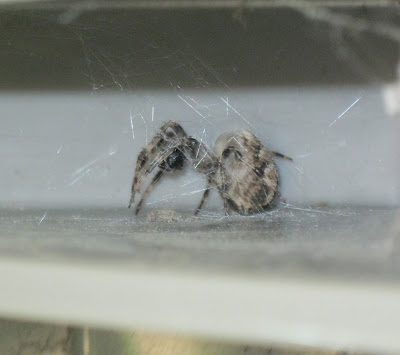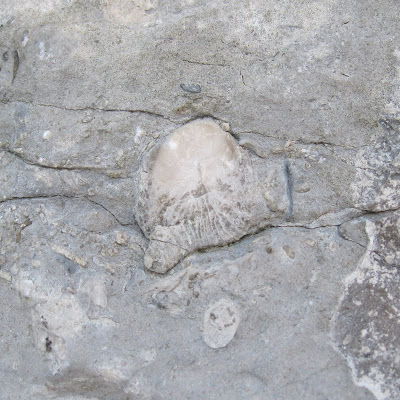
Lovely garden spider making its home under the ledge of my recycling box. It appears to be snacking on a fly. Good girl.

Beautiful moth, but I don't like it when it thinks my face is the moon. Wouldn't that pattern make for a beautiful sweater?
I have to admit that the house centipede is pretty horrifying. I had never seen one before moving to Ontario. In the three years we've lived at the DV, I've only seen this creature twice and both times were in autumn. I'm told that they are more commonly seen in old homes because of damp, creepy basements (which is certainly what we have). After researching this insect, I find there is nothing much to worry about; it's quite the scaredy cat when it comes to humans.
 It's so fast it's hard to catch - but I succeeded and outside it went. I only kill in self defense, but flies and mosquitos are fair game year round.
It's so fast it's hard to catch - but I succeeded and outside it went. I only kill in self defense, but flies and mosquitos are fair game year round. This guy came in soon after I had cracked a window open. I had never seen this bug before and was unsuccessful in trying to identify it. It has a nice pattern on its back that looks like an African warrior's shield. If anyone can identify it, please let me know.
This guy came in soon after I had cracked a window open. I had never seen this bug before and was unsuccessful in trying to identify it. It has a nice pattern on its back that looks like an African warrior's shield. If anyone can identify it, please let me know.
This grasshopper was huge and if you look closely, it appears like it's looking at me while taking its picture. I think grasshoppers are pretty cool.

This variety of house spiders is the most commonly seen in our home, not just in autumn, but year round. They are unbelievably passive.
My daughter lived most of her life in Vancouver, in a condominium on the 7th floor where insects were a rare occurrence. Now that we live in Southern Ontario, in a small town surrounded by woods and farmland, rarely does a day go by without hearing a gasp, a scream or a "what the hell is that?!"


















